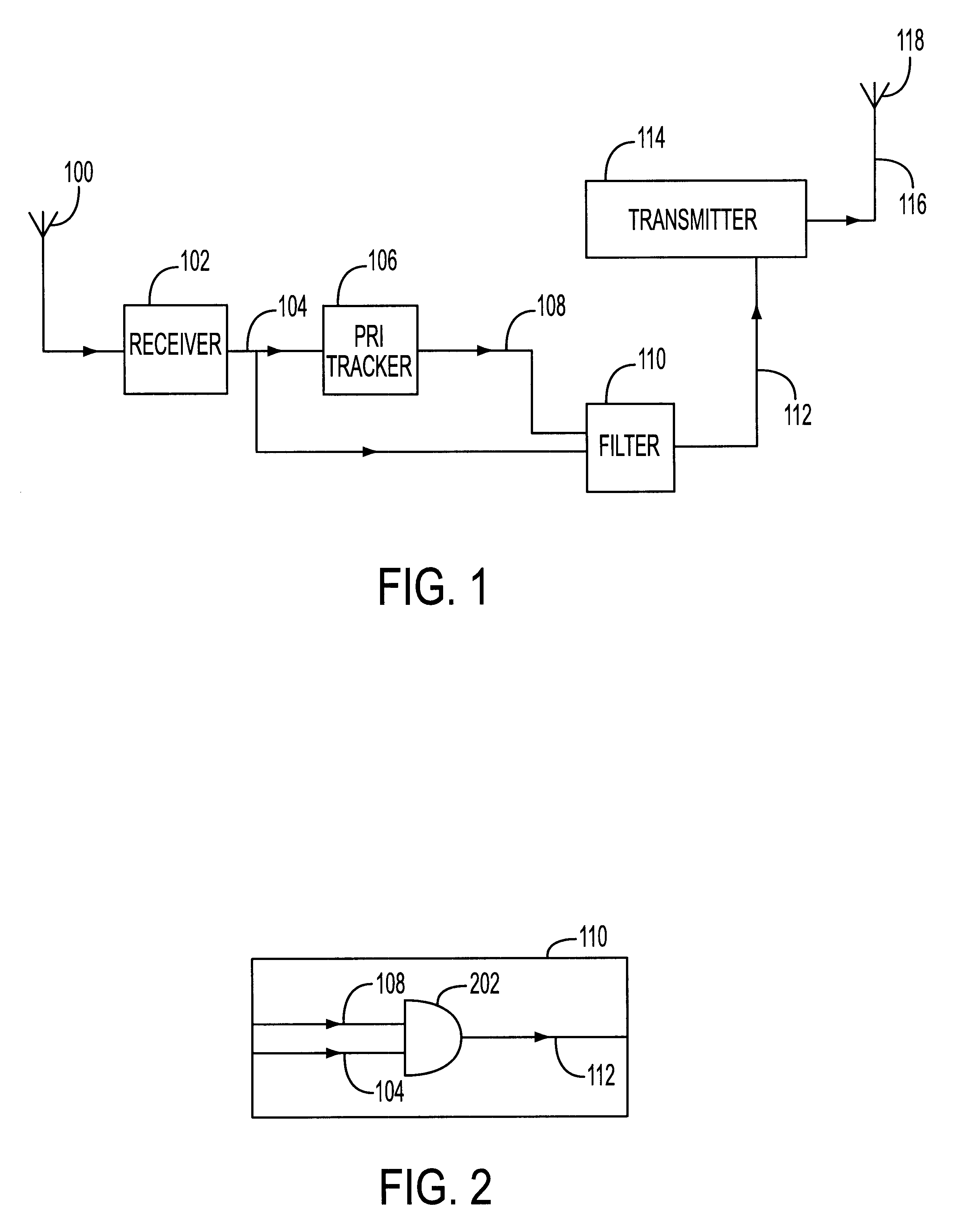Transponder apparatus
a transponder and apparatus technology, applied in the field of transponder apparatus, can solve the problems of complex repeater systems that are prone to interference, repeater systems that lack the ability to provide adequate isolation between input and output, and the repeater system is also more complex, so as to reduce the vulnerability of interference, eliminate clock jitter, and provide sufficient power
- Summary
- Abstract
- Description
- Claims
- Application Information
AI Technical Summary
Benefits of technology
Problems solved by technology
Method used
Image
Examples
Embodiment Construction
In the following description, for the purposes of explanation, numerous specific details are set forth in order to provide a more thorough understanding of the present invention. It will be apparent, however, to one skilled in the art, that variations of the embodiments disclosed herein are also possible.
FIG. 1 depicts an exemplary embodiment of a triggered transponder in accordance with the present invention. As illustrated in FIG. 1, pulsed RF signals received by receiving antenna 100, are sent to receiver 102. Although receiver 102 may be a dedicated receiver, designed to receive a specific frequency or specifically modulated signal, in accordance with the present invention, receiver 102 may be a tunable receiver, designed to controllably receive a plurality of frequencies or types of modulated signals. The received signal 104 that is output from receiver 102 is sent to both a PRI tracker 106 and a filter 110. In one embodiment, the receiver 102 functions to demodulate the incomi...
PUM
 Login to View More
Login to View More Abstract
Description
Claims
Application Information
 Login to View More
Login to View More - R&D
- Intellectual Property
- Life Sciences
- Materials
- Tech Scout
- Unparalleled Data Quality
- Higher Quality Content
- 60% Fewer Hallucinations
Browse by: Latest US Patents, China's latest patents, Technical Efficacy Thesaurus, Application Domain, Technology Topic, Popular Technical Reports.
© 2025 PatSnap. All rights reserved.Legal|Privacy policy|Modern Slavery Act Transparency Statement|Sitemap|About US| Contact US: help@patsnap.com



